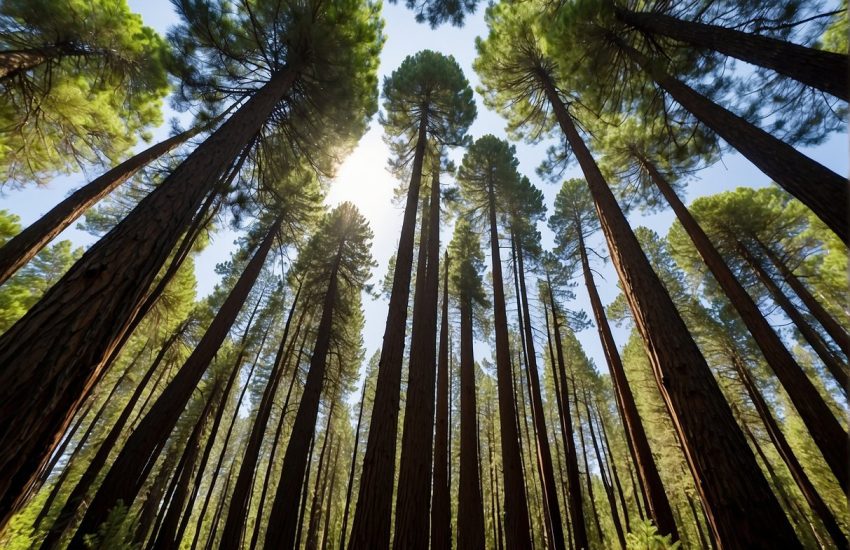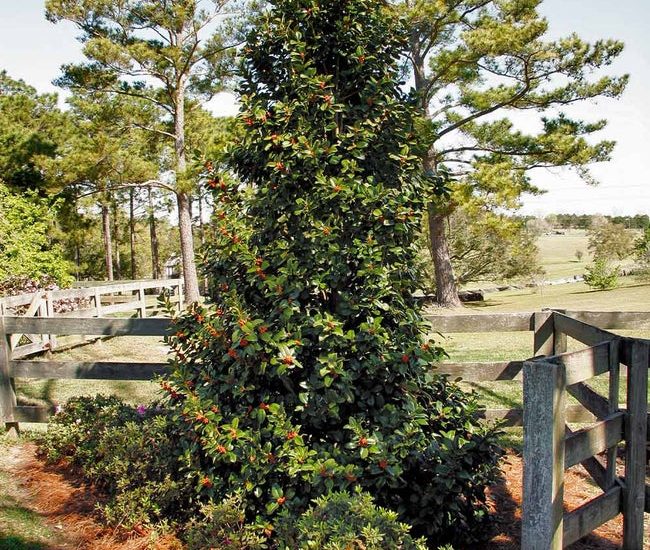Evergreen Trees in Alabama: Types and Benefits
Alabama is home to a diverse range of flora and fauna, including several species of evergreen trees. These trees are a popular choice for garden and landscaping purposes, as they provide year-round greenery and require minimal maintenance. In this article, we will explore the various types of evergreen trees that can be found in Alabama and their unique characteristics.

One of the most common types of evergreen trees found in Alabama is the Southern Magnolia. This tree is known for its large, glossy leaves and fragrant white flowers that bloom in the summer. Another popular choice is the Leyland Cypress, which is fast-growing and can reach heights of up to 60 feet. It is often used as a privacy screen or windbreak in landscaping.
Other evergreen trees that can be found in Alabama include the Eastern Red Cedar, the Virginia Pine, and the Loblolly Pine. Each of these trees has its own unique features and benefits, making them a great addition to any garden or landscape design. Whether you are looking for a tree to provide shade, privacy, or simply to add some greenery to your outdoor space, there is an evergreen tree in Alabama that is sure to meet your needs.
Types of Evergreen Trees in Alabama
Evergreen trees are a popular choice for landscaping in Alabama due to their year-round green foliage. There are several types of evergreen trees that are native to Alabama, as well as popular varieties that thrive in the state’s climate.
Native Evergreens
Some of the native evergreen trees in Alabama include the longleaf pine (Pinus palustris), eastern red cedar (Juniperus virginiana), and southern magnolia (Magnolia grandiflora). These trees have adapted to the climate and soil conditions in Alabama and are well-suited for the state’s landscape.
Popular Evergreen Varieties
In addition to native species, there are several popular evergreen varieties that are commonly grown in Alabama. These include the Leyland cypress (Cupressus x leylandii), Italian cypress (Cupressus sempervirens), and various holly species such as American holly (Ilex opaca) and yaupon holly (Ilex vomitoria).
Evergreens for Specific Purposes
Evergreen trees can serve a variety of purposes in landscaping, such as providing privacy, shade, or acting as a windbreak. For privacy, Leyland cypress and American holly are popular choices due to their dense foliage. For shade, southern magnolia and various holly species are often used. For windbreaks, eastern red cedar is a hardy option that can withstand strong winds.
In conclusion, there are many types of evergreen trees that can thrive in Alabama’s climate. Whether you are looking for a native species or a popular variety, there are many options to choose from depending on your landscaping needs.
Caring for Evergreens

Evergreens are a popular landscaping choice in Alabama due to their year-round foliage and ability to thrive in a variety of conditions. However, they do require proper care to ensure their health and longevity. In this section, we will discuss the soil and sunlight requirements for evergreens, as well as how to deal with pests and diseases.
Soil and Sunlight Requirements
Evergreens require well-drained soil that is moist but not waterlogged. They can tolerate a variety of soil types, but prefer slightly acidic soil. When planting evergreens, it is important to choose a location that receives full sun or partial shade. In Alabama, evergreens can tolerate drought conditions, but they still require regular watering during dry spells.
Dealing with Pests and Diseases
Evergreens are generally pest-resistant, but they can still fall victim to certain pests and diseases. Common pests that affect evergreens in Alabama include spider mites, bagworms, and scale insects. To prevent these pests from infesting your trees, it is important to keep them healthy and properly watered. If you do notice signs of infestation, such as yellowing foliage or webbing, you can treat the tree with insecticidal soap or horticultural oil.
In terms of diseases, evergreens in Alabama are most commonly affected by root rot and needle blight. Root rot is caused by waterlogged soil and can be prevented by ensuring proper drainage. Needle blight is caused by fungal spores and can be treated with fungicides.
Overall, caring for evergreens in Alabama requires proper soil and sunlight conditions, regular watering, and vigilance against pests and diseases. By following these guidelines, you can ensure that your evergreens remain healthy and beautiful for years to come.


